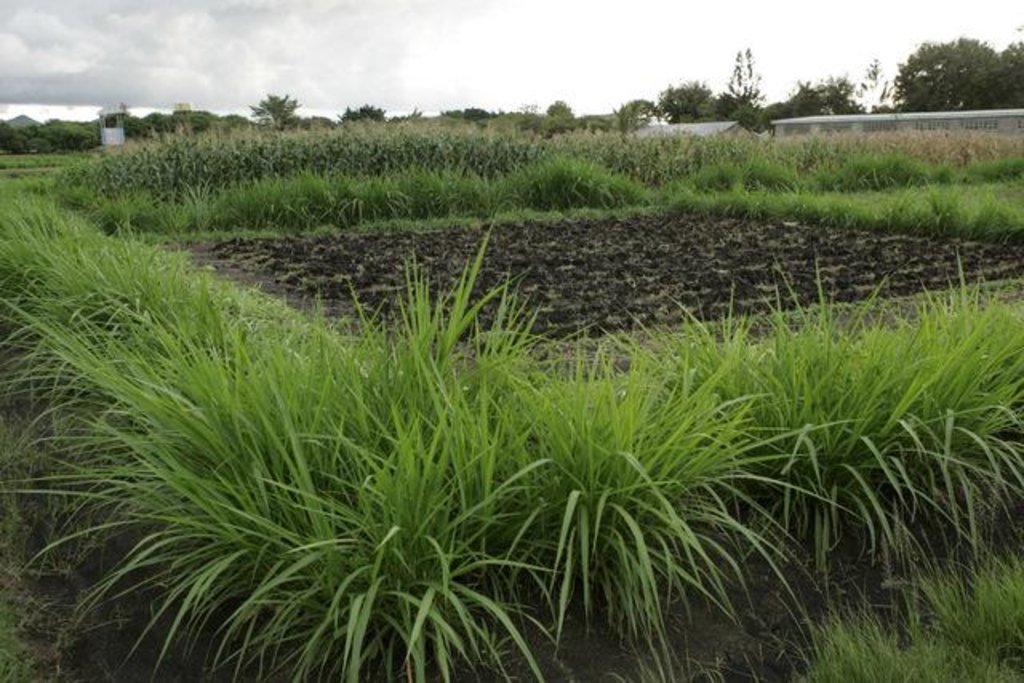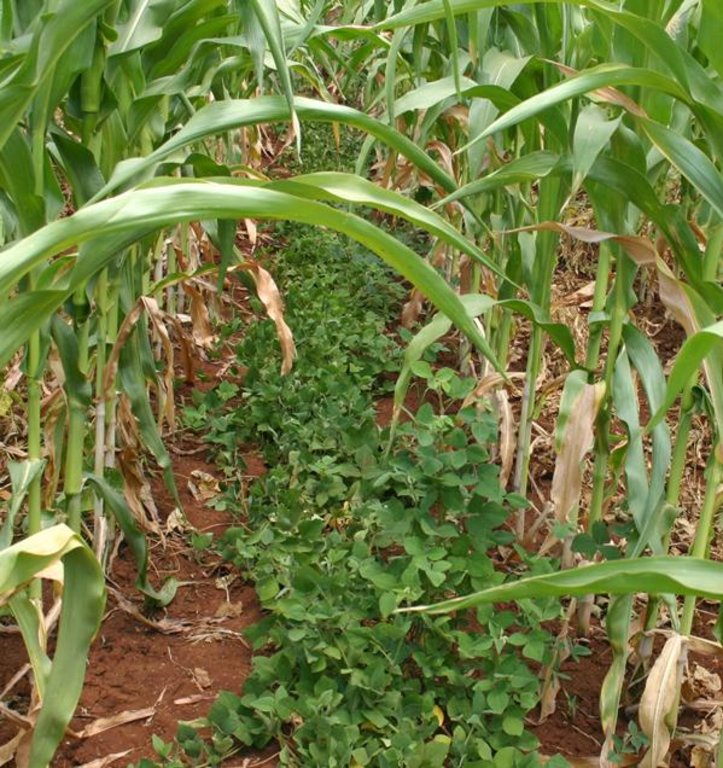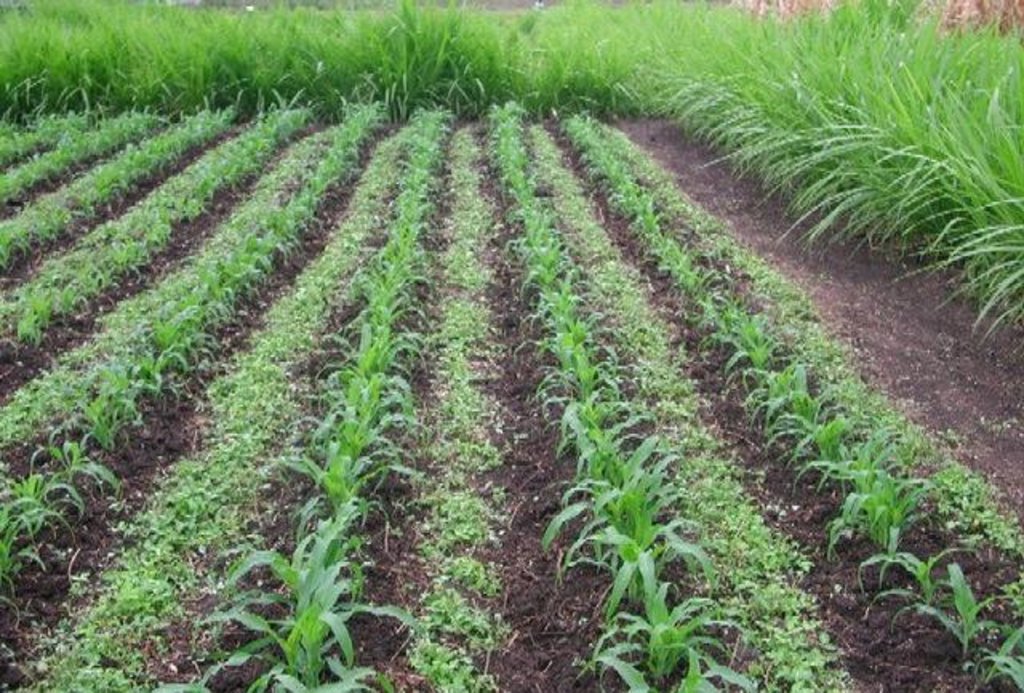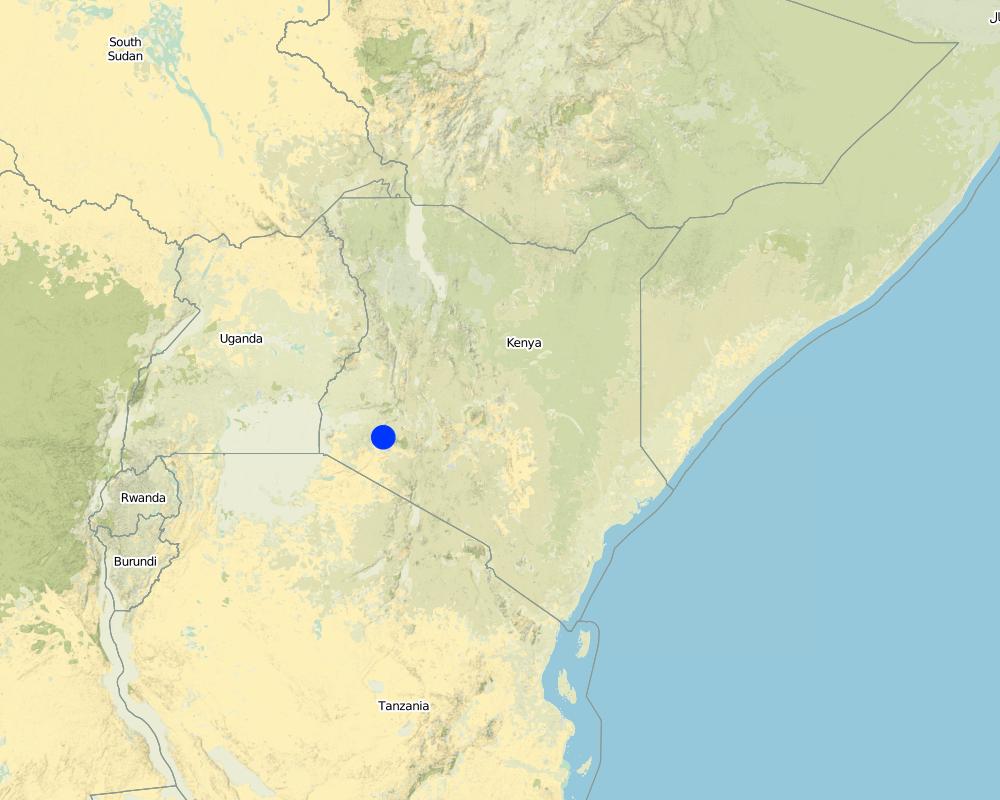Push-Pull Integrated Pest and Soil Fertility Management [ប្រទេសកេនយ៉ា]
- ការបង្កើត៖
- បច្ចុប្បន្នភាព
- អ្នកចងក្រង៖ Julie Zähringer
- អ្នកកែសម្រួល៖ –
- អ្នកត្រួតពិនិត្យ Alexandra Gavilano
technologies_958 - ប្រទេសកេនយ៉ា
- សង្ខេបជា PDF
- សេចក្តីសង្ខេបពេញលេញជាទម្រង់ PDF សម្រាប់បោះពុម្ព
- សេចក្តីសង្ខេបពេញលេញទម្រង់អ៊ីនធឺនេត
- សេចក្តីសង្ខេបពេញលេញ (មិនមានទម្រង់ជាក់លាក់)
- Push-Pull Integrated Pest and Soil Fertility Management: 22 ខែ ធ្នូ ឆ្នាំ 2016 (inactive)
- Push-Pull Integrated Pest and Soil Fertility Management: 28 ខែ មិនា ឆ្នាំ 2017 (inactive)
- Push-Pull Integrated Pest and Soil Fertility Management: 12 ខែ ឧសភា ឆ្នាំ 2017 (inactive)
- Push-Pull Integrated Pest and Soil Fertility Management: 25 ខែ មេសា ឆ្នាំ 2019 (public)
ពិនិត្យមើលគ្រប់ផ្នែក
ពង្រីកមើលទាំងអស់ បង្រួមទាំងអស់1. ព័ត៌មានទូទៅ
1.3 លក្ខខណ្ឌទាក់ទងទៅនឹងការប្រើប្រាស់ទិន្នន័យដែលបានចងក្រងតាមរយៈ វ៉ូខេត
អ្នកចងក្រង និង(បុគ្គលសំខាន់ៗ)យល់ព្រមទទួលយកនូវលក្ខខណ្ឌនានាទាក់ទងទៅនឹងការប្រើប្រាស់ទិន្នន័យដែលបានចងក្រងតាមរយៈវ៉ូខេត:
បាទ/ចា៎
2. ការពណ៌នាពីបច្ចេកទេស SLM
2.1 ការពណ៌នាដោយសង្ខេបពីបច្ចេកទេស
និយមន័យបច្ចេកទេស:
“Push-Pull” is a technology to efficiently control pests and progressively improves soil fertility.
2.2 ការពណ៌នាលម្អិតពីបច្ចេកទេស
ការពណ៌នា:
In the Lake Victoria region - like in many other parts of sub-Saharan Africa – stemborer pests, striga weeds and poor soil fertility are the main constraints to efficient production of cereals. In combination they often lead to complete crop failure. The “Push-Pull” technology efficiently controls the pests and progressively improves soil fertility. It involves intercropping maize with a repellent plant, such as desmodium (“push”); an attractant trap plant, such as napier grass (Pennisetum purpureum) is planted as a border crop around this intercrop (“pull”). The stemborer moths are attracted to volatile compounds emitted by the napier grass which at the same time serves as a haven for the borers' natural enemies. When moths lay eggs on napier grass a sticky substance secreted by the grass physically traps the moths’ larvae. Napier is also an important carbohydrate-rich fodder grass. Desmodium, a perennial cover crop, produces repellent volatile chemicals that push away the moths, and the plant effectively suppresses striga weeds through its root exudates. Furthermore, desmodium fixes nitrogen, conserves soil moisture, enhances arthropod abundance and diversity and improves soil organic matter, thereby making cereal cropping systems more resilient and adaptable to climate change. Being a low-growing plant it does not interfere with the crops' growth. Push-pull simultaneously improves cereal productivity; enables production of year-round quality fodder - thereby allowing for integration with livestock husbandry; diversifies income streams and enables smallholders to enter into the cash economy. It also improves soil fertility; protects fragile soils from erosion and enables a minimum tillage system. The technology is appropriate to resource-poor smallholder farmers as it is based on locally available plants, affordable external inputs, and fits well with traditional mixed cropping systems practiced in SSA.
2.3 រូបភាពនៃបច្ចេកទេស
2.5 ប្រទេស/តំបន់/ទីតាំងកន្លែង ដែលបច្ចេកទេសត្រូវបានអនុវត្ត និងបានគ្រប់ដណ្តប់ដោយការវាយតម្លៃនេះ
ប្រទេស:
ប្រទេសកេនយ៉ា
តំបន់/រដ្ឋ/ខេត្ត:
Lake Victoria region
Map
×2.6 កាលបរិច្ឆេទនៃការអនុវត្ត
ប្រសិនបើមិនច្បាស់ឆ្នាំ សូមបញ្ជាក់កាលបរិច្ឆេទដែលប្រហាក់ប្រហែល:
- 10-50 ឆ្នាំ
2.7 ការណែនាំពីបច្ចេកទេស
សូមបញ្ជាក់តើបច្ចេកទេសត្រូវបានណែនាំឱ្យអនុវត្តដោយរបៀបណា:
- ពេលកំពុងពិសោធន៍
3. ចំណាត់ថ្នាក់នៃបច្ចេកទេស SLM
3.2 ប្រភេទដីប្រើប្រាស់មួយប្រភេទ (ច្រើនប្រភេទ) ដែលបានអនុវត្តបច្ចេកទេស

ដីដាំដំណាំ
- ដំណាំប្រចាំឆ្នាំ
មតិយោបល់:
Major land use problems (land users’ perception): Cereal pests and diseases, decline of soil organic matter and fertility
3.3 ព័ត៌មានបន្ថែមអំពីអ្នកប្រើប្រាស់ដី
ការផ្គត់ផ្គង់ទឹកនៅកន្លែងអនុវត្តបច្ចេកទេស:
- ទឹកភ្លៀង
3.5 ការសាយភាយនៃបច្ចេកទេស
មតិយោបល់:
Total area covered by the SLM Technology is 76000 m2.
3.6 វិធានការ SLM ដែលបញ្ចូលនូវបច្ចេកទេស

វិធានការរុក្ខជាតិ
- V2: ស្មៅនិងរុក្ខជាតិៗដែលដុះមានអាយុមិនលើសពី 2ឆ្នាំ

វិធានការក្សេត្រសាស្ត្រ
- A1: ដំណាំ/គម្របដី
មតិយោបល់:
Main measures: vegetative measures
Type of agronomic measures: mixed cropping / intercropping, contour planting / strip cropping, retaining more vegetation cover
Type of vegetative measures: aligned: -along boundary, aligned: -linear
3.7 កំណត់ប្រភេទនៃការធ្លាក់ចុះគុណភាពដីសំខាន់ៗដែលបច្ចេកទេសនេះបានដោះស្រាយ

ការធ្លាក់ចុះសារធាតុគីមីក្នុងដី
- Cn: ការថយចុះជីជាតិ និងកាត់បន្ថយបរិមាណសារធាតុសរីរាង្គ (មិនកើតឡើងដោយការហូរច្រោះទេ)

ការធ្លាក់ចុះជីវសាស្ត្រនៃដី
- Bh: ការបាត់បង់ទីជំរក
- Bp: ការកើនឡើងនូវសត្វល្អិត ឬជំងឺ បាត់បង់នូវសត្វមានប្រយោជន៍
មតិយោបល់:
Main type of degradation addressed: Cn: fertility decline and reduced organic matter content, Bh: loss of habitats, Bp: increase of pests / diseases, loss of predators
3.8 ការពារ កាត់បន្ថយ ឬស្តារឡើងវិញនៃការធ្លាក់ចុះគុណភាពដី
បញ្ជាក់ពីគោលដៅរបស់បច្ចេកទេស ដែលផ្តោតទៅការធ្លាក់ចុះគុណភាពដី:
- ការកាត់បន្ថយការធ្លាក់ចុះគុណភាពដី
- ការការពារការធ្លាក់ចុះគុណភាពដី
មតិយោបល់:
Main goals: prevention of land degradation, mitigation / reduction of land degradation
4. បច្ចេកទេសជាក់លាក់ សកម្មភាពអនុវត្ត ធាតុចូល និងថ្លៃដើម
4.1 គំនូសបច្ចេកទេសនៃបច្ចេកទេសនេះ
4.2 លក្ខណៈពិសេសនៃបច្ចេកទេស/ ពណ៌នាពីគំនូរបច្ចេកទេស
Layout of push-pull plot with1 m spacing between napier border and maize field
Technical knowledge required for field staff / advisors: moderate
Technical knowledge required for land users: low
Main technical functions: increase in organic matter, increase in nutrient availability (supply, recycling,…), promotion of vegetation species and varieties (quality, eg palatable fodder), pest control
Mixed cropping / intercropping
Material/ species: Desmodium as a perennial intercrop
Remarks: Desmodium is drilled in between maize rows at 75 cm row to row distance
Contour planting / strip cropping
Material/ species: napier grass (Pennisetum purpureum)
Remarks: Spacing of napier plants should be 75 cm between rows and 50 cm between plants within a row
Aligned: -along boundary
Vegetative material: G : grass
Spacing between rows / strips / blocks (m): 75.00
Vertical interval within rows / strips / blocks (m): 50.00
Aligned: -linear
Vegetative material: C : perennial crops
Spacing between rows / strips / blocks (m): 75.00
Perennial crops species: Desmodium
Grass species: Napier grass (Pennisetum purpureum)
4.4 សកម្មភាពបង្កើត
| សកម្មភាព | ប្រភេទវិធានការ | ពេលវេលា | |
|---|---|---|---|
| 1. | Plant 3 consecutive rows of napier grass (Bana variety) around the plot: make planting holes, apply fertilizer (or manure), place 3-node canes or root splits, cover with soil (before rains) | សារពើរុក្ខជាតិ | |
| 2. | Land preparation for desmodium: plough and harrow the land (to get fine soil), make furrows between the rows where the maize will be planted (using strong pointed stick; before rains) | សារពើរុក្ខជាតិ | |
| 3. | Mix desmodium seed with super phosphate fertilizer (ratio 1:2), or alternatively with fine soil. Sow into the furrows and cover with soil (onset of rains) | សារពើរុក្ខជាតិ | |
| 4. | Plant maize. / Weeding of maize, desmodium and Napier grass | សារពើរុក្ខជាតិ | 3 and 5-6 weeks after planting maize |
| 5. | Manage napier grass: 1st harvest after 3 months (plants are 1-1,5 m high), leave stem height of 10 cm for quick regrow, start with inner row | សារពើរុក្ខជាតិ | 1st harvest after 3 months |
4.6 សកម្មភាពថែទាំ
| សកម្មភាព | ប្រភេទវិធានការ | ពេលវេលា/ ភាពញឹកញាប់ | |
|---|---|---|---|
| 1. | Land preparation for maize: carefully dig/plough between desmodium lines not to disturb / uproot the desmodium (it is a perennial crop!) | សារពើរុក្ខជាតិ | |
| 2. | Plant maize | សារពើរុក្ខជាតិ | |
| 3. | Trim the desmodium so that it does not overgrow in between the maize plants | សារពើរុក្ខជាតិ | after 3 and 6 weeks |
| 4. | Repeat activities 5.-7. listed under establishment | សារពើរុក្ខជាតិ |
4.7 កំណត់ថ្លៃដើមសម្រាប់ការថែទាំ/ សកម្មភាពរបស់បច្ចេកទេស (ក្នុងរយៈពេលមួយឆ្នាំ)
មតិយោបល់:
Machinery/ tools: planting stick / hoe
Size of push-pull plot for the cost calculations above = 0.25 ha.
4.8 កត្តាសំខាន់បំផុតដែលមានឥទ្ធិពលដល់ការចំណាយ
ពណ៌នាពីកត្តាប៉ះពាល់ចម្បងៗទៅលើថ្លៃដើម:
Input prices (in US$):
1 Person-day = 1.2 US$.
1 napier root split / cane = 0.14 US$.;
1 kg desmodium seeds = 18.9 US$.;
1 kg superphosphate fertilizer = 0.68US$
5. លក្ខណៈបរិស្ថានធម្មជាតិ និងមនុស្ស
5.1 អាកាសធាតុ
បរិមាណទឹកភ្លៀងប្រចាំឆ្នាំ
- < 250 មម
- 251-500 មម
- 501-750 មម
- 751-1,000 មម
- 1,001-1,500 មម
- 1,501-2,000 មម
- 2,001-3,000 មម
- 3,001-4,000 មម
- > 4,000 មម
តំបន់កសិអាកាសធាតុ
- មានភ្លៀងមធ្យម
Thermal climate class: tropics
5.2 សណ្ឋានដី
ជម្រាលជាមធ្យម:
- រាបស្មើ (0-2%)
- ជម្រាលតិចតួច (3-5%)
- មធ្យម (6-10%)
- ជម្រាលខ្ពស់បន្តិច (11-15%)
- ទីទួល (16-30%)
- ទីទួលចោត (31-60%)
- ទីទួលចោតខ្លាំង (>60%)
ទម្រង់ដី:
- ខ្ពង់រាប
- កំពូលភ្នំ
- ជម្រាលភ្នំ
- ជម្រាលទួល
- ជម្រាលជើងភ្នំ
- បាតជ្រលងភ្នំ
តំបន់តាមរយៈកម្ពស់ :
- 0-100 ម
- 101-500 ម
- 501-1,000 ម
- 1,001-1,500 ម
- 1,501-2,000 ម
- 2,001-2,500 ម
- 2,501-3,000 ម
- 3,001-4,000 ម
- > 4,000 ម
មតិយោបល់ និងបញ្ចាក់បន្ថែមអំពីសណ្ឋានដី :
Slopes on average: flat (0-2%), gentle (3-5%), moderate (6-10%)
Landforms: plateau / plains, footslopes, valley floors
5.3 ដី
ជម្រៅដីជាមធ្យម:
- រាក់ខ្លាំង (0-20 សម)
- រាក់ (21-50 សម)
- មធ្យម (51-80 សម)
- ជ្រៅ (81-120 សម)
- ជ្រៅខ្លាំង (> 120 សម)
វាយនភាពដី (ស្រទាប់លើ):
- ម៉ត់/ ធ្ងន់ (ឥដ្ឋ)
- មធ្យម (ល្បាយ, ល្បាប់)
សារធាតុសរីរាង្គនៅស្រទាប់ដីខាងលើ:
- ទាប (<1%)
5.6 លក្ខណៈនៃអ្នកប្រើប្រាស់ដីដែលអនុវត្តបច្ចេកទេស
ទីផ្សារនៃប្រព័ន្ធផលិតកម្ម:
- ពាក់កណ្តាលពាណិជ្ជកម្ម (ផ្គត់ផ្គង់ខ្លួនឯង/ ពាណិជ្ជកម្ម
- សម្រាប់ហូបក្នុងគ្រួសារ (ផ្គត់ផ្គង់ខ្លួនឯង)
កម្រិតជីវភាព:
- មិនល្អ
- មិនល្អខ្លាំង
ឯកជន ឬក្រុម:
- ធ្វើខ្លួនឯង/ គ្រួសារ
កម្រិតប្រើប្រាស់គ្រឿងយន្ត:
- ប្រើកម្លាំងពលកម្ម
- ប្រើកម្លាំងសត្វ
សូមបញ្ជាក់ពីលក្ខណៈពាក់ព័ន្ធផ្សេងទៀតអំពីអ្នកប្រើប្រាស់ដី:
Land users applying the Technology are mainly disadvantaged land users
Difference in the involvement of women and men: some organized in informal groups
Population density: > 500 persons/km2
5.7 ទំហំផ្ទៃដីជាមធ្យមនៃដីផ្ទាល់ខ្លួន ឬជួលគេដែលបានអនុវត្តបច្ចេកទេស
- < 0.5 ហិកតា
- 0.5-1 ហិកតា
- 1-2 ហិកតា
- 2-5 ហិកតា
- 5-15 ហិកតា
- 15-50 ហិកតា
- 50-100 ហិកតា
- 100-500 ហិកតា
- 500-1,000 ហិកតា
- 1,000-10,000 ហិកតា
- > 10,000 ហិកតា
តើផ្ទៃដីនេះចាត់ទុកជាទំហំកម្រិតណាដែរ ខ្នាតតូច មធ្យម ឬខ្នាតធំ (ធៀបនឹងបរិបទតំបន់)?
- ខ្នាតតូច
5.8 ភាពជាម្ចាស់ដី កម្មសិទ្ធប្រើប្រាស់ដី និងកម្មសិទ្ធប្រើប្រាស់ទឹក
មតិយោបល់:
Land ownership: state, communal / village, individual, not titled, individual, titled
6. ផលប៉ះពាល់ និងការសន្និដ្ឋាន
6.1 ផលប៉ះពាល់ក្នុងបរិវេណអនុវត្តបច្ចេកទេសដែលកើតមាន
ផលប៉ះពាល់លើសេដ្ឋកិច្ចសង្គម
ផលិតផល
ផលិតកម្មដំណាំ
ផលិតកម្មចំណីសត្វ
ចំណូល និងថ្លៃដើម
ការចំណាយលើធាតុចូលកសិកម្ម
ចំណូលក្នុងកសិដ្ឋាន
ផលប៉ះពាល់ទៅលើអេកូឡូស៊ី
ដី
សំណើមដី
គម្របដី
ការបាត់បង់ដី
វដ្តនៃសារធាតុចិញ្ចឹម/ការទទួលបាន
សារធាតុសរីរាង្គដី/ការបូនក្រោមដី
ការកាត់បន្ថយហានិភ័យនៃគ្រោះមហន្តរាយ និងគ្រោះអាកាសធាតុ
ល្បឿនខ្យល់
6.3 ភាពប្រឈម និងភាពរួសនៃបច្ចេកទេសទៅនឹងការប្រែប្រួលអាកាសធាតុ និងគ្រោះអាកាសធាតុ/ គ្រោះមហន្តរាយ (ដែលដឹងដោយអ្នកប្រើប្រាស់ដី)
មតិយោបល់:
Technology is tolerant to climatic extremes.
6.4 ការវិភាគថ្លៃដើម និងអត្ថប្រយោជន៍
តើផលចំណេញ និងថ្លៃដើមត្រូវបានប្រៀបធៀបគ្នាយ៉ាងដូចម្តេច (ទស្សនៈរបស់អ្នកប្រើប្រាស់ដី)?
រយៈពេលខ្លី:
វិជ្ជមាន
រយៈពេលវែង:
វិជ្ជមានខ្លាំង
តើផលចំណេញ និងការថែទាំ/ ជួសជុលត្រូវបានប្រៀបធៀបគ្នាយ៉ាងដូចម្តេច (ទស្សនៈរបស់អ្នកប្រើប្រាស់ដី)?
រយៈពេលខ្លី:
វិជ្ជមាន
រយៈពេលវែង:
វិជ្ជមានខ្លាំង
6.5 ការទទួលយកបច្ចេកទេស
មតិយោបល់:
100% of land user families have adopted the Technology without any external material support
There is a strong trend towards spontaneous adoption of the Technology
Comments on adoption trend: To date it has been adopted by over 29,000 smallholder farmers in East Africa, mostly without incentives. Where the technology is being introduced for the first time, farmers only need demonstration and technology information
6.7 ភាពខ្លាំង/ គុណសម្បត្តិ/ ឱកាសនៃបច្ចេកទេស
| ភាពខ្លាំង/ គុណសម្បត្តិ/ ឱកាស ទស្សនៈរបស់បុគ្គលសំខាន់ៗ |
|---|
| Improves cereal productivity |
| Enables production of year-round quality fodder - thereby allowing for integration with livestock husbandry |
| Diversifies income streams and enables smallholders to enter into the cash economy |
| Improves soil fertility; protects fragile soils from erosion and enables a minimum tillage system |
| The technology is appropriate to resource-poor smallholder farmers as it is based on locally available plants, affordable external inputs, and fits well with traditional mixed cropping systems practiced in SSA. |
6.8 ភាពខ្សោយ/ គុណវិបត្តិ/ ហានិភ័យនៃបច្ចេកទេស និងវិធីសាស្ត្រដោះស្រាយ
| ភាពខ្សោយ/ គុណវិបត្តិ/ ហានិភ័យ ទស្សនៈរបស់អ្នកប្រើប្រាស់ដី | តើបច្ចេកទេសទាំងនោះបានដោះស្រាយបញ្ហាដូចម្តេច? |
|---|---|
| Napier grass is an aggressive plant that spreads through rhizomes under the ground | regular control and weeding. |
| The older napier stems and leaves are less palatable for livestock | regularly cut young, tender leaves and stems. |
| Minor adjustment of the smallholder farming system to introduce desmodium in traditional maize-bean intercrops | desmodium (fodder crop) and beans (food crop, important protein source) can both be intercropped with maize. In areas where striga weed is not a problem, farmers can plant desmodium after every 3 or 5 rows of maize, and use the other rows for beans. Stemborers will still be repelled |
7. ឯកសារយោង និងវេបសាយ
7.2 ឯកសារយោងដែលបានចេញផ្សាយ
ចំណងជើង អ្នកនិពន្ធ ឆ្នាំ ISBN:
Prof. Zeyaur R. Khan (Principal Scientist and Programme Leader) and Jimmy Pittchar, Push-pull Programme, International Centre of Insect Physiology & Ecology (ICIPE), Mbita Point, Kenya; zkhan@mbita.mimcom.net; jpittchar@mbita.mimcom.net; jpittchar@icipe.org
ការតភ្ជាប់ និងម៉ូឌុល
ពង្រីកមើលទាំងអស់ បង្រួមទាំងអស់ការតភ្ជាប់
គ្មានការតភ្ជាប់
ម៉ូឌុល
គ្មានម៉ូឌុល







